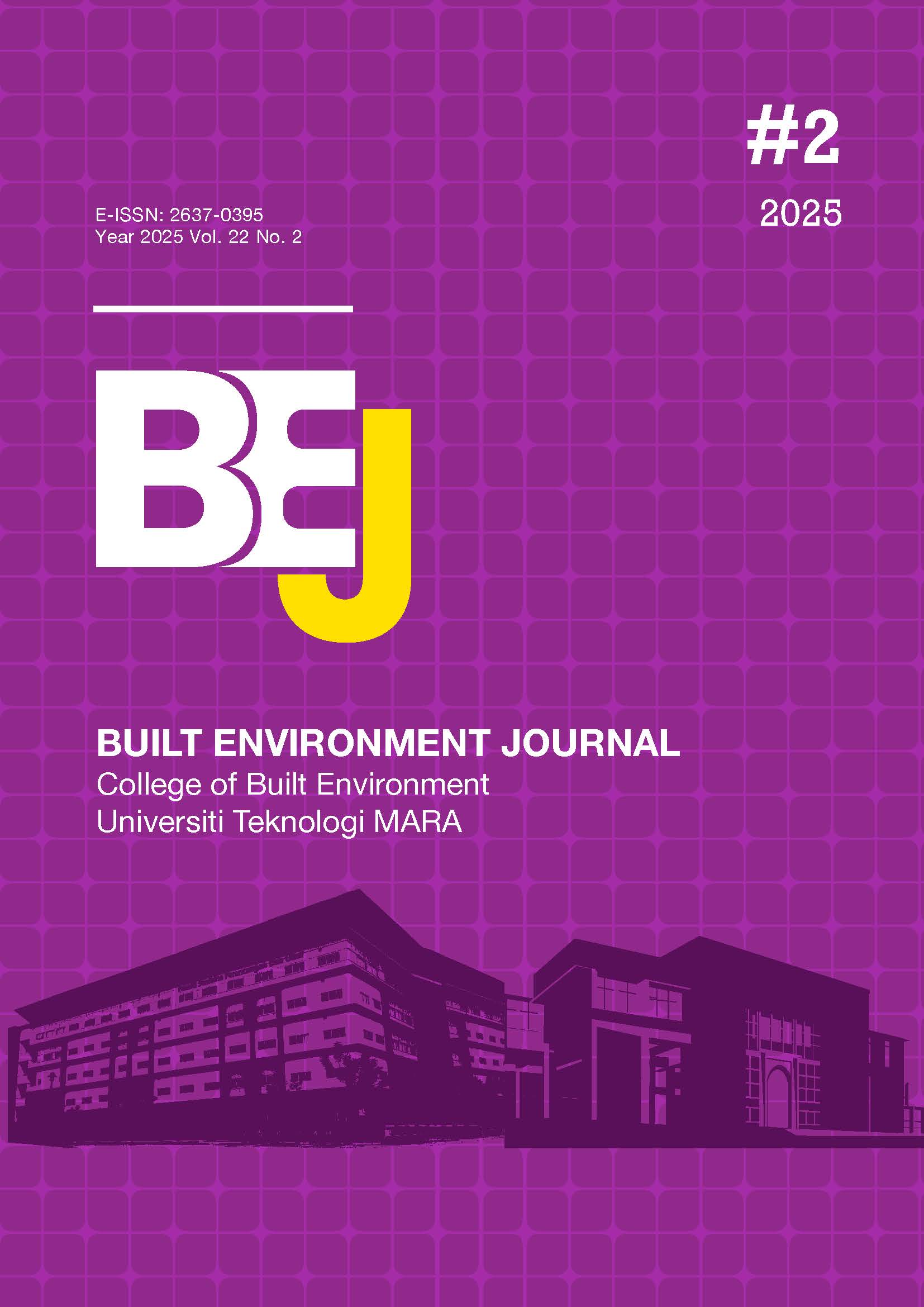Mapping the Property Crime Spatial Pattern in Selangor using Social Media Data Mining and GIS
DOI:
https://doi.org/10.24191/bej.v22i2.5935Keywords:
Property Crime, Data Mining, Hotspot Analysis, GISAbstract
The previous studies had shown that the information extracted from social media can be utilised in locating offenders, establishing probable cause for warrants, and identifying potential witnesses. By integrating social media data mining with Geographic Information System (GIS) techniques, it is possible to map property crime hotspots based on user-generated content. This approach can provide valuable insights to complement officially reported crime data. Through GIS-based spatial analysis, patterns and distributions of crime can be identified, enabling the detection of high-crime areas or hotspots. The ability of hotspot analysis to present crime concentration across a geographical landscape makes it a powerful and practical tool for law enforcement and urban planning. From this study, the total property crime geocoded data that managed to collect is 488 cases consisting of the snatch, burglary, theft, and car theft crime in Selangor. Each crime case has been analysed for its spatial pattern and distribution where for both snatch and burglary crime exhibits clustering while theft crime gives pattern and distribution of random across the study area. The spatial pattern of each crime show that the southern part of Selangor has more crime cases as compared to northern part of Selangor. The red zones show the areas with a very high value of z score indicate significant spatial clustering The findings would be beneficial to the relevant authorities regarding the underreporting of crime cases.
References
Ahmad, N., Lim, K. Y., & Rahman, A. A. (2024). Criminological Insights: A Comprehensive Spatial Analysis of Crime Hot Spots of Property Offenses in Malaysia's Urban Centers. Forum Geografi, 38(1), 2024, 94–109. https://doi.org/10.23917/forgeo.v38i1.4306
Bernabeu-Bautista, Á., Serrano-Estrada, L., Perez-Sanchez, V. R., & Martí, P. (2021). The Geography of Social Media Data in Urban Areas: Representativeness and Complementarity. ISPRS International Journal of Geo-Information, 10(11), 747. https://doi.org/10.3390/ijgi10110747
Cano-Marin, E., Mora-Cantallops, M., Sánchez-Alonso, S. (2023). Twitter as a Predictive System: A Systematic Literature Review, Journal of Business Research, 157 (2023) 113561, https://doi.org/10.1016/j.jbusres.2022.113561
Canter, D., & Youngs, D. (2016). Crime and society. Journal of the Academy of Social Science. http://doi.org/10.1080/21582041.2016.1259495
Castell-Britton, Sigifredo. (2024). The Relationship Between Overpopulation and Crime Rates in San Andres Island. Qeios.
Department of Statistics Malaysia. (2024). Crime Statistics, Malaysia, 2024.
Hazaymeh, K., Almagbile, A., & Alomari, A. H. (2022). Spatiotemporal Analysis of Traffic Accidents Hotspots Based on Geospatial Techniques. ISPRS International Journal of Geo-Information, 11(4), 260. https://doi.org/10.3390/ijgi11040260
Kaur, M., Saini, M. Role of Artificial Intelligence in The Crime Prediction And Pattern Analysis Studies Published Over The Last Decade: A Scientometric Analysis. Artif Intell Rev 57, 202 (2024). https://doi.org/10.1007/s10462-024-10823-1
Kusuma, H., Hariyani, H. F., & Hidayat, W. (2019) The Relationship Between Crime and Economics Growth in Indonesia. 2nd ICIEBP The 2nd International Conference on Islamic Economics, Business, and Philanthropy (ICIEBP) Theme: “Sustainability and Socio-Economic Growth” Volume 2019. https://doi.org/10.18502/kss.v3i13.4271
Ristea, A., & Leitner, M. (2020). Urban Crime Mapping and Analysis Using GIS. ISPRS International Journal of Geo-Information, 9(9), 511. https://doi.org/10.3390/ijgi9090511
Saraiva, M., & Teixeira, B. (2023). Exploring the Spatial Relationship between Street Crime Events and the Distribution of Urban Greenspace: The Case of Porto, Portugal. ISPRS International Journal of Geo-Information, 12(12), 492. https://doi.org/10.3390/ijgi12120492
Sugiharti, L., Purwono, R., Esquivias, M. A., & Rohmawati, H. (2023). The Nexus between Crime Rates, Poverty, and Income Inequality: A Case Study of Indonesia. Economies, 11(2), 62. https://doi.org/10.3390/economies11020062
Twitter Inc. (2019). Twitter Brand Resources. Retrieved from Twitter.com: https://about.twitter.com/en_us/company/brand- resources.html
Vivek, M., Prathap, B.R. Spatio-temporal Crime Analysis and Forecasting on Twitter Data Using Machine Learning Algorithms. SN COMPUT. SCI. 4, 383 (2023). https://doi.org/10.1007/s42979-023-01816-y
Wang, Y., Yu, W., & Liu, S. (2019). The Relationship Between Social Media Data and Crime Rates in the United States. SAGE Journal. https://doi.org/10.1177/2056305119834585
Downloads
Published
How to Cite
Issue
Section
License
Copyright (c) 2025 Siti Hawa Mat Sapuan, Nafisah Khalid, Maisarah Abdul Halim, Nabilah Naharudin, Ainon Nisa Othman

This work is licensed under a Creative Commons Attribution-NonCommercial-NoDerivatives 4.0 International License.
CC BY-NC-ND 4.0 DEED
Attribution-NonCommercial-NoDerivs 4.0 International












